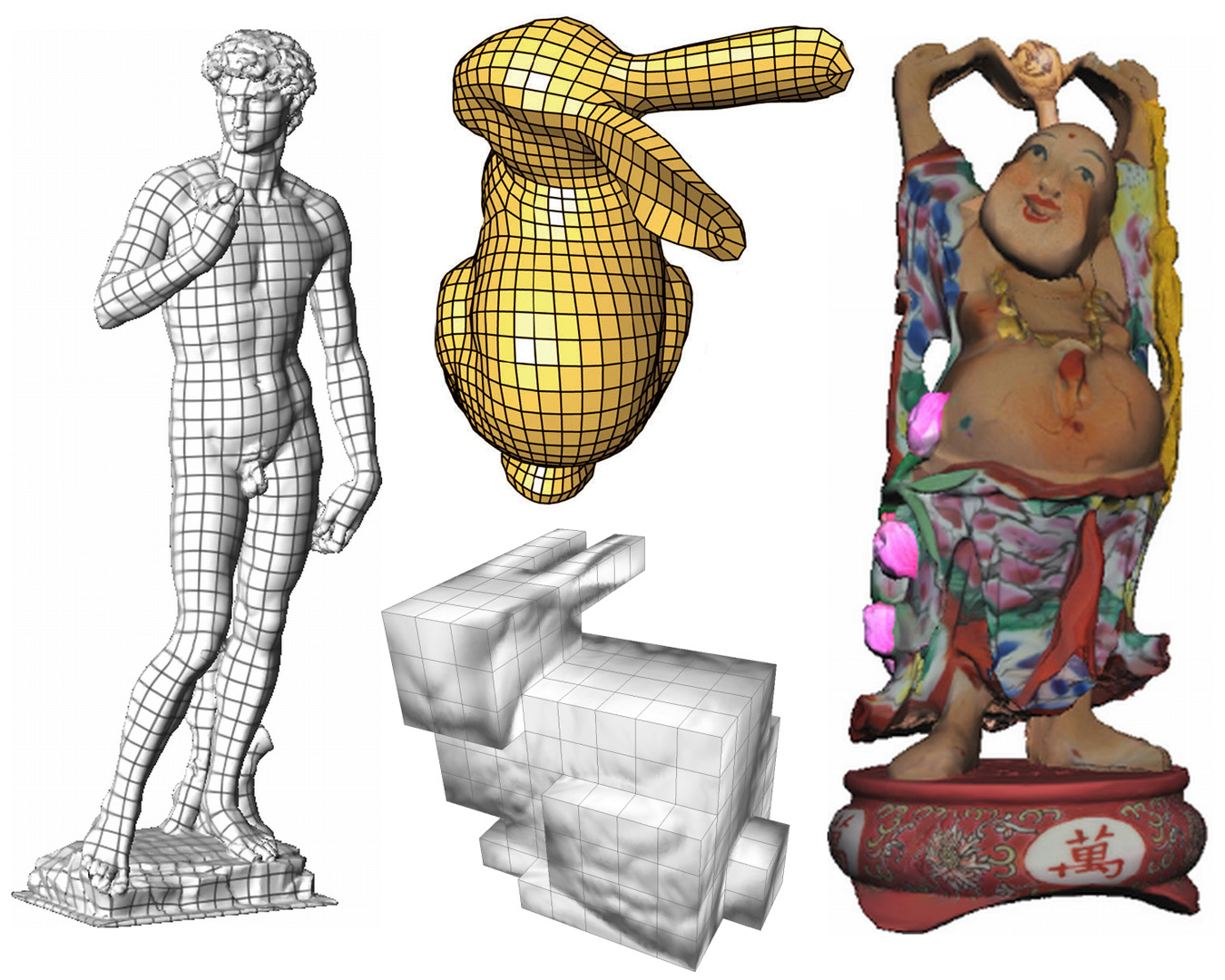“Mesh Parameterization: Theory and Practice” by Hormann, Polthier and Sheffer
Conference:
Type(s):
Title:
- Mesh Parameterization: Theory and Practice
Presenter(s)/Author(s):
Abstract:
Mesh parameterization is a powerful geometry-processing tool with numerous computer graphics applications, from texture mapping to animation transfer. This course outlines its mathematical foundations, describes recent methods for parameterizing meshes over various domains, discusses emerging tools like global parameterization and inter-surface mapping, and demonstrates a variety of parameterization applications.
For any two surfaces with similar topology, there exists a bijective mapping between them. If one of these surfaces is a triangular mesh, the problem of computing such a mapping is referred to as mesh parameterization. The surface that the mesh is mapped to is typically called the parameter domain.
Parameterization was introduced to computer graphics for mapping textures onto surfaces. Over the last decade, it has gradually become a ubiquitous tool for many mesh-processing applications, including detail-mapping, detail-transfer, morphing, mesh-editing, mesh-completion, remeshing, compression, surface-fitting, and shape-analysis. In parallel to the increased interest in applying parameterization, various methods were developed for different kinds of parameter domains and parameterization properties.
The goal of this course is to familiarize attendees with the theoretical and practical aspects of mesh parameterization. It provides the skills needed to implement or improve existing methods, investigate new approaches, and critically evaluate the suitability of the techniques for a particular application.
The course begins with an introduction to the general concept of parameterization and an overview of its applications. The first half of the course then focuses on planar parameterizations, while the second addresses more recent approaches for alternative domains. The course covers the mathematical background, including intuitive explanations of parameterization properties like bijectivity, conformality, stretch, and area-preservation. The state of the art is reviewed by explaining the main ideas of several approaches, summarizing their properties, and illustrating them using live demos. The course concludes with a list of open research problems and potential applications that can benefit from parameterization.
Additional Information:
Prerequisites
Some prior exposure to mesh representation of geometric models and a working knowledge of vector calculus, elementary linear algebra, and the fundamentals of computer graphics. Some familiarity with differential geometry and graph theory is useful, but not required.
Intended Audience
Graduate students, researchers, and application developers who want to understand and use the concepts and technologies used in mesh parameterization.





